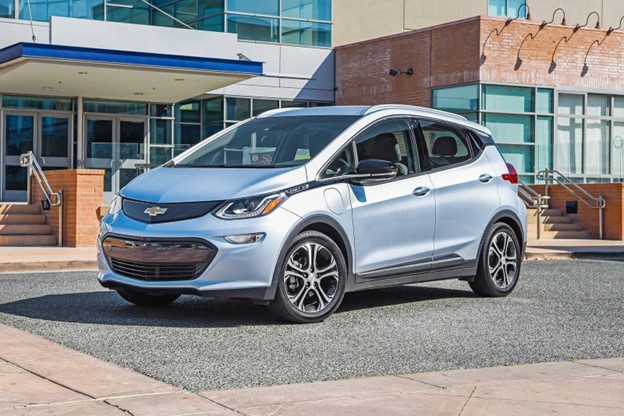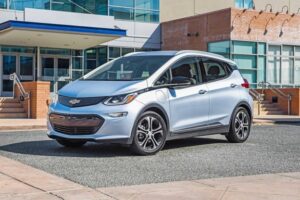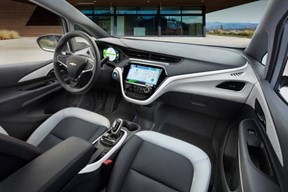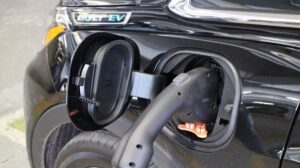
After over six decades of automobile ownership, one of the most exciting changes I have witnessed is the development of modern hybrid and electric-powered vehicles.
Surprisingly, the history of hybrid cars goes back over 100 years. Defined as any car that runs on two sources of power, the most common hybrids combined a gasoline engine with an electric motor. The brilliant young German engineer, Ferdinand Porsche joined Austrian industrialist Ludwig Lohner in developing Hybrid front ‘wheel motors’ that would be powered by an engine and generator, thus eliminating the need for gears. These were exciting new ideas, but alas, Henry Ford’s 1904 assembly line approach to car manufacturing. soon made early Hybrids a thing of the past.
Fast forward to the 1960’s, the era of the American muscle car and the growing awareness of air pollution caused by automobiles. Congress introduced legislation encouraging the use of electric vehicles to reduce air pollution. A foreign oil embargo in 1973 caused gasoline prices to soar while supply fell dramatically. Since about 85 percent of all American workers drove to work then, high gas prices and declining supplies were a major concern.
Over the next quarter century auto manufacturers spent billions on research and development of hybrid automobile technologies. Despite this huge effort, few vehicles could compete with gasoline vehicles on price and performance. In the late 1990s, GM and Toyota introduced a handful of all-electric vehicles, but they were soon dropped from production.
On 27 October 1995, at the 31st Tokyo motor show, Toyota unveiled a concept car that became the prototype for hybrid vehicles for the next decade. That concept car was the Prius, and it became one of Toyota’s most recognized models over the following two decades.
The Prius Driving Experience
Being an old motor-head myself, I was immediately interested in the Prius, but the US production version wasn’t available until 2001. I marched to the Toyota dealer as soon as Prius’s hit the showroom, took my test drive, and signed up. Surprisingly, Toyota sold only 15,000 cars the first year in the US. Did I make a mistake?? Not at all! By 2011, Prius sales in the U.S. had soared to a million units. It seemed everyone was driving a Prius, especially in southern California. It was the cool ride for the cool people!
Here’s what got me excited about this car. The Prius looks small, but the interior is roomy enough for five, plus substantial rear cargo room. It also sports a low drag coefficient, to further increase overall vehicle efficiency.
The Prius is a symphony of clever systems and I liked that. A small gas engine, a battery, and a powerful electric motor provide electrical harmony while a sophisticated control system monitors the ratio of power from every source, ensuring that the car runs efficiently. The engine output can be divided between the driving wheels and the on‑board generator which can also work as a motor. While the gas engine’s main job is to drive the wheels, any surplus output is used to recharge the Ni-MH battery pack. Another clever feature is the regenerative braking system that captures kinetic energy to recharge the batteries, providing extra drive motor power when passing or climbing a hill.
Under low‑speed, standing, or coasting conditions, the gas engine can shut down completely while the car runs on electric power only. When the engine and the electric motor are used together, electricity is again generated to top up the battery.
With all these features taken together, I really liked the Prius and the brilliant technical aspects of the car. It was an affordable, responsible vehicle, especially considering the need for reduced petroleum consumption and emissions. We drove our Prius for around seven years without any problems (except running it out of gas once). We really enjoyed that car.
At that time, it wasn’t really known how long the battery might last and Prius drivers feared that the battery might fail prematurely and be expensive to replace. In the end, properly maintained Prius batteries lasted 8-10 years or more. JD Power estimated the replacement cost to be $1000-$1200, including installation cost.
In 2013 we moved from Kansas City to Longmont, CO. Over time we became acquainted with a local EV and renewable energy advocate. He had installed a solar array on his roof that served his home energy needs including a fast charger in his garage for a Tesla S. He needed a second car for a family-member, and he was very impressed with the newly introduced 2017 Chevy Bolt. That got us interested in the new2017 Bolt EV.
The idea of a plug-in EV had a practical appeal for us. Electricity was inexpensive along the Colorado front range, especially in Longmont, CO near Boulder. Nearly 100% of our short & medium range driving could be done in a Bolt. Depending on the season the Bolt had a range of 200-320 miles. (battery output decreases as the weather gets colder) With federal and state subsidies a well-equipped new 2017 Chevy Bolt could be bought for about $25,000.
We visited a Chevy dealer and took a test drive in the Bolt. At that time they were selling well and were a bit scarce, but they had one premium car available and it was equipped with the DC fast charging port. We liked the firm ride and quick 0-60 acceleration. The accelerator pedal controlled the speed like a golf cart, using both friction and regenerative braking. Dual Drive modes provided a standard slow creep when stopped and an alternative Low Range that provides stronger regeneration, stopping the car using no friction. I quickly realized the energy-saving benefits of these driving modes.
In the end, we decided to buy the Bolt. The technology was compelling, and the car was attractive and roomier than expected. It was fun to drive with its zippy acceleration.

For charging purposes, I installed a 240-volt Level 2 charger in our garage, placing it on an interior wall next to the car. The charger cost about $1000, and I was able to install it by myself. It provided 25 miles of range for each hour of charging, easily getting a full charge overnight when power rates are lower. We liked the Bolt driving experience and always preferred to drive it rather that our larger diesel-powered BMW SUV. We put about 1000 miles per month on the Bolt at a cost of less than $25 per month.
In November 2020 Chevrolet issued the first Bolt recalls on the 2017-2019 models due to suspected battery fires. The company instructed owners to limit charging capacity to around 90% and to bring the cars to a dealer for diagnostics and possible battery module replacement. Data showed that only 16% of owners stopped charging to less than 100% in response to the safety recall. While things were getting sorted out owners were instructed to park outside until further notice—in case of fire.


It was a nightmare PR situation for Chevy. We personally experienced the recalls and inconveniences but suffered no serious hardship. We were able to use our car with the battery at about 90% capacity. In the end, Chevy faced a difficult problem honestly and did their best to treat owners fairly.
The safety recall inspections widened to years 2020 to 2022 with complete battery replacement for 2017-2019 models. We were fortunate to get a free replacement battery around 2020.
Our next EV experience was with a 2019 KIA Niro EV. One nice weekday morning, we think in 2021, we drove our Bolt to the Kia dealership in Ft. Collins, CO, planning only to see what a KIA EV looked like. We learned more about the car and decided to take a test drive. Later that morning we traded the Bolt for a new 2019 Kia Niro EV.
We have now owned our Kia Niro for around 2½ years. In its 2019 review of the Kia Niro, Car and Driver Magazine called it “A Spectacular Entry-Level Electric” with substantial range, ample backseat, and cargo space that positions Kia as the dark horse in electric excellence!
My personal experience with range has been consistently higher than rated and always sufficient for all our local area driving. With a full charge in the summer, we often have 330 miles showing. Running the AC will cost 20-30 miles of range. Winter range is around 200-250 miles and interior heating will reduce range by a few percent. We’ve never reached the point of range anxiety. We regularly drive to the Rocky Mountain National Park which can be 3-4 thousand feet higher than Longmont, CO where we live. If you’ve driven to a higher elevation like this you’ll get about 75% of those miles back as you descend to your home base.
We have had the Kia serviced at the Ft. Collins, CO Kia dealer, including a free first month checkup. We have had three scheduled 5000-mile checkups costing about $45, a including tire rotation. Oh, and one other thing-the Kia has three driving settings to choose from. One is called ECO—the most economical way to drive (stodgy). A mid-range setting is, well, in the middle. Then there’s the OH MY GOD! Sport setting that provides the fastest acceleration. Passengers either hate or love it and I’m pretty sure, if I had the chance, I could smoke one of those hot-rod Subaru’s off the line!
The bottom line: Our Kia is practical, fun to drive, and inexpensive to own. I sure wouldn’t swap it for a Tesla!!

